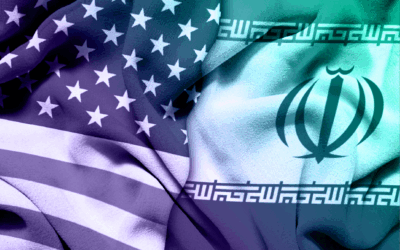May 6, 2024
By Andrew Gier, Capstone trade analyst
When it comes to China trade policy, President Biden’s time in office has been less turbulent than his predecessor. While he has sought to address Chinese competition in key strategic areas through things like export controls on semiconductor technology, he has refrained from imposing the broad import tariffs favored by former President Trump. However, we expect this period of relative quiet in US-China trade relations to end, and investors and companies should be thinking about both the potential shifts in US policy that will come and what the Chinese Response will look like.
Why Change is Coming
There has been a noticeable shift in rhetoric from the Biden administration on China in recent weeks with a unifying theme: combatting Chinese industrial overcapacity. A few recent examples include:
- Treasury Secretary Janet Yellen underscored “the global economic consequences of China’s industrial overcapacity” during a visit to China.
- Secretary of State Anthony Blinken made similar comments following his recent visit.
- President Biden called on Katherine Tai, the United States Trade Representative (USTR), to consider tripling tariffs on steel and aluminum, citing damage to US industry caused by Chinese overcapacity.
We do not believe the timing of this change of tone is a coincidence. China is one of the few truly bipartisan issues left in Washington, and there is an election in November. A recent Pew Research poll found that 81% of US adults see China unfavorably, with 41% holding a very unfavorable opinion. Taking headline-grabbing action against China is an easy way for a President facing a tight reelection bid to appeal to a broad swathe of the electorate.
Investors and companies should be thinking about both the potential shifts in US policy that will come and what the Chinese Response will look like.
Katherine Tai, who oversees existing tariffs imposed on imports from China by former President Trump, told the Senate Finance Committee that her office was nearly finished with its review of the tariffs. Stakeholders we have spoken with take her comments seriously and believe that the results of this review with changes in tariff rates could be released by the end of the month. We covered some of the changes that might be included in a recent note where we discussed how tariffs on products benefitting from Chinese industrial policy, like lithium-ion batteries, could see tariffs increase while tariffs are lowered on consumer goods as a result of this review.
President Biden’s opponent also strongly favors new China tariffs. If elected, we believe it is highly likely that President Trump would look to resume his trade war with China, with new tariffs at the forefront of these efforts. Time Magazine released the full transcript of an interview with former President Donald Trump this week. When asked about his proposals to impose a 60% tariff on Chinese imports and a 10% tariff on all imports, Trump said, “It may be more than that. It may be a derivative of that… But it will be somebody—look when they come in, and they steal our jobs, and they steal our wealth, they steal our country.” He also said of tariffs, “I think it’s a tax on the country that’s doing it. And I know. Look, I took in billions of dollars from China. Nobody else ever did anything on China.”
How China Might Respond
With both the Democratic and Republican presidential candidates calling for new tariffs on China, it stands to reason that new tariffs are coming. But if that does happen, what will China do about it?
The phrase most often used to discuss the Chinese response to US trade measures is “tit-for-tat.” Throughout the Trump and Biden administrations, China has consistently sought to carefully calibrate its response to new US trade restrictions in intensity and subject matter. When President Trump first began imposing tariffs on imports from China, China imposed tariffs of equivalent value on imported products from the US.
However, the US trade deficit with China forced Chinese policymakers to confront the reality that they had far fewer options for tariffs than President Trump. As a result, China resorted to non-tariff measures. These included letting US agricultural exports rot in ports while they awaited inspection and slowing the process for US companies to obtain the licensing and permitting necessary to operate in China.
Throughout the Trump and Biden administrations, China has consistently sought to carefully calibrate its response to new US trade restrictions in intensity and subject matter.
China’s use of non-tariff measures has continued during the Biden administration. China has responded to US restrictions on the export of advanced semiconductor equipment used to produce parts for advanced weapons systems by leveraging its dominant position in other key supply chains, seeking to mirror the US action as best it can. Examples include:
- In July 2023, following US and Japanese restrictions on exports of microchip technology, China restricted exports of Gallium and Germanium
- In October 2023, China increased licensing restrictions for two types of graphite used in EV batteries following another round of US export restrictions
- In December 2023, China announced a ban on the export of technology to make neodymium magnets, citing national security concerns
In each of these examples, China sought to mirror US export restrictions implemented to protect national security by restricting the export of products that can be critical in a defense context. Recently, members of both parties have urged action to combat market distortions caused by Chinese subsidies and manufacturing overcapacity. We believe products like lithium-ion batteries could be among the top candidates for new tariffs. If either a Biden or Trump administration adjusts Section 301 tariffs, it stands to reason that China would follow its now familiar pattern of restricting exports of key materials and equipment. If the US targets Chinese industrial subsidies, would it not make sense for China to target the same Inflation Reduction Act (IRA) subsidies listed in its recent WTO dispute by restricting the export of minerals and equipment needed to make good on the IRA’s clean energy manufacturing onshoring efforts?
In any event, we expect tensions to escalate in the coming months. Capstone will be closely watching the reignition of conflict and the ensuing fallout.
- With assistance from Asa Breuss-Burgess

Andrew Gier, Capstone trade analyst
Read more from Andrew:
Why the Price of Batteries, and the Energy Transition, May be Poised to Rise
Trade Policy’s Coming Bipartisan Moment
Solar’s Complicated Moment
Read Andrew’s bio here.



























